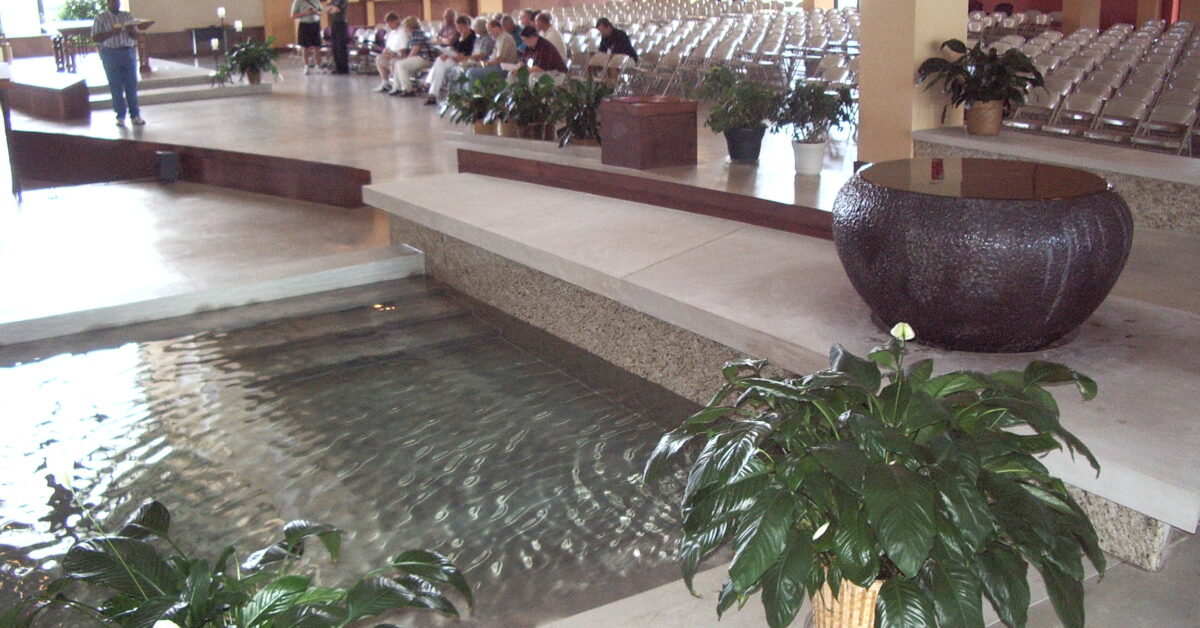Images of Baptism: The Full Baptismal Plunge
The ecumenical report Baptism, Eucharist, and Ministry (WCC, 1982)—a valuable indication of where the various member denominations stood on those practices both theologically and ritually—said that the images of baptism “are many but the reality is one” (II, A-E). It is that plurality of images that we intend to explore in this new series over the next four weeks through the book Images of Baptism by Maxwell Johnson. We recommend the book to you as a basis for studying the various sets of images of baptism in your catechumenate or in congregational Bible studies. It provides a biblical and liturgical summary of the us of these primary sets of images in the church:
- Baptism as Participation in the Death, Burial and Resurrection of Christ
- Baptism as New Birth and Adoption by Water and the Holy Spirit
- Baptism as the Sacrament and Seal of the Holy Spirit
- Baptism as Incorporation into the Body of Christ
This week and over the next four weeks we’ll take up each of the images on the basis of Dr. Johnson’s book and reflect upon the plurality of images of the one reality: baptism.
How amazing though is the gift of that plurality. Johnson’s introduction begins with a quote from Cyril of Jerusalem’s Procatechesis (introductory lecture to the elect) that reveals the multitude of ways in which baptism is participation in the work of God in Jesus:
Great indeed is the baptism which is offered you. It is a ransom to captives; the remission of offences; the death of sin; the regeneration of the soul; the garment of light; the holy seal indissoluble; the chariot to heaven; the luxury of paradise; a procuring of the kingdom; the gift of adoption” (Cross, Lectures on the Christian Sacraments, St. Vladimir’s Seminary Press, 1977, 50).
The gifts that baptism imparts through the Word associated with the ritual washing and “plunge into the waters of the font with Christ” (Johnson, xiii). We want to receive those gifts and be able to impart them through our catechumenal preaching, teaching, and ritual practice. As Johnson says regarding the intent of the book,
“An attempt toward recovering those images for the church today. As such, these images provide for us models by which we might glimpse some of the manifold riches that baptism is and offers to us. Hence, we might say that it is precisely a variety of models for conceptualizing, catechizing and celebrating baptism that these images provide” (Johnson, ix).
The models encapsulate the primary sets of images that the Scriptures and the liturgical reflection of the church employ to enrich our experience of baptism. As Johnson notes, they are intend to “give rise to thought and invite further reflection” (Johnson, x). That is what we intend to do with this series as well. We hope it will spur your thinking so that your baptismal practice, catechesis, and preaching is as baptismally rich and full as possible. We hope these blog posts will allow you to consider the multitude of metaphors for participation in baptism and in baptismal living.





 This first is a 12th Century font that is part of the museum at Wartburg Castle.
This first is a 12th Century font that is part of the museum at Wartburg Castle.